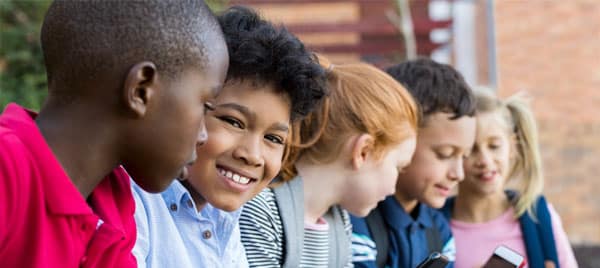Using Social Interaction to Engage Students


Written by Sarah Scavone
At this point in the school year, we have spent a great deal of time intentionally building our learning community. The strong relationships we build with our students, both student-to-teacher and student-to-student, are intended to provide them with a strong feeling of belonging and significance with their peers. This will support and guide them through the social and academic risks they take in school. Our thoughtful planning on how to explicitly teach social-emotional skills alongside academic skills sets our students up for success as our expectations naturally increase. Right now, we are faced with the challenge of how to do that in socially distanced and virtual classroom settings.
Learning is Active!
For our students to be engaged in their learning, they need to be doing the work the majority of the time. Our teacher language is vital in being clear, concise, and direct so students have the information they need but ample time to be reading, writing, problem-solving, etc. When designing your lessons, plan with the natural learning cycle in mind. Students will be engaged when they have opportunities to set goals, explore, work, and reflect on their experiences.
Be sure students have the supplies they need in order to do as much of their own work as possible. My school supplies my fourth-grade students with journals, pencils, whiteboards, and markers to be able to show their thinking in every learning experience they have.
Learning is Interactive!
Deep learning occurs through social interaction. For the past several months we have been more socially isolated than we are used to. Children, and adults as well, are missing the human connection that school, extracurricular activities, and social gatherings give us.
Be sure lessons include ways for students to interact with one another. I have each student’s name on a craft stick, and I rely on using them to be sure I create equity between students’ voices throughout my lessons. If you’re teaching through Zoom, try teaching the chat box as a tool for communication. I use it to provide sentence stems for conversations and also open it up for students to share their thoughts and ideas with each other.
Try using various virtual tools in ways that students will be able to work together to brainstorm, work, share their work, or reflect on the process. Keep in mind the ages and stages of your students when planning how to support them working together. Use Interactive Modeling to teach the structure and build on it slowly so students are set up for success.
Interactive Learning Structures to Try in a Socially Distanced or Virtual Classroom
- Google Jamboard: Students add sticky notes with ideas to share on one page.
- Table Talk, Create, Share: Students work in breakout rooms to discuss a learning topic, brainstorm together how to create a visual to represent that idea, then present their visual to the rest of the class. In each breakout room, one student can volunteer to be the drawer, and another can volunteer to be the speaker. When students return to the whole group, teach them how to use the Speaker View in Zoom and “pin” the presenting student.
- Carousel: Set up a slide deck so students, individually or in small groups, are working on an assigned topic and adding their information there. After a few minutes, assign students to move to a different slide where they will read the work that is started and then add more.
- Museum Walk: Set up a slide deck so students have their own slide where they will respond to information. When students are done, they can move through the slides to see the work of their peers.
To get more information on ways you can create more interaction during your learning experiences, check out The Joyful Classroom: Practical Ways to Engage and Challenge Elementary Students or Middle School Motivators! 22 Interactive Learning Structures. If you’re looking for ways to support your school community, look at the Lively Learning Quick Coaching Guide. We also have opportunities to learn more in our virtual One Day Workshops, such as Introduction to Responsive Classroom, Special Area Teachers, and Sustaining Responsive Classroom Momentum.
Tags: Academic Choice, activities, Building Classroom Community
